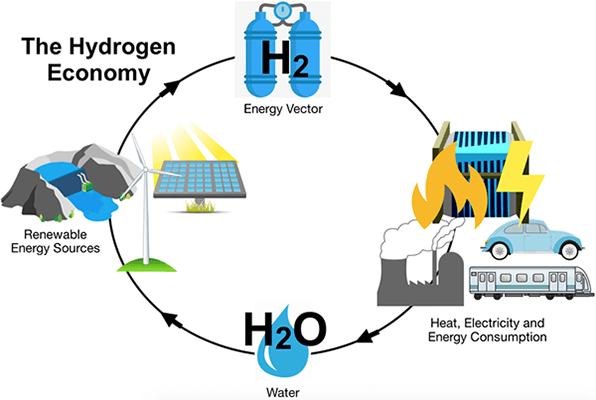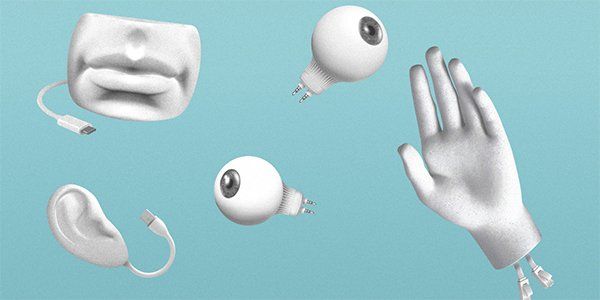5 Technologies to Watch in 2021
Date: May 3, 2021
To say that we are passionate about technology at Beta Solutions is an understatement!
We keenly follow new technology developments and often have lively debates on the merits of such technologies over our morning coffee. The most fun part however is thinking up ways how these new technologies could take our clients’ products to the next level. That being said, we are also very aware of the value of tried and trusted technologies and the risks of incorporating leading edge technologies in product development projects. To this end, we sometimes do internal research projects first to gain knowledge and experience on a new technology that we think may be of particular value to many clients.
Below are 5 intriguing technologies that we would like to highlight for you.
1. Lithium-metal Batteries

Has the limitations of electric vehicles, namely their cost and the fact that you can only drive a few hundred kilometers before you have to stop for a lengthy recharge, put you off purchasing one?
QuantumScape1 is claiming to be redefining the frontier of battery technology with their solid-state lithium-metal battery. Their early test results are said to have shown that the battery could boost the range of electric vehicles by up to 80%.
A solid-state lithium-metal battery is a battery that replaces the polymer separator used in conventional lithium-ion batteries with a solid-state separator. The replacement of the separator enables the carbon or silicon anode used in conventional lithium-ion batteries to be replaced with a lithium-metal anode. The lithium metal anode is more energy dense than conventional anodes, allowing the battery to store a greater amount of energy in the same volume. Some solid-state designs use excess lithium to form the anode, but the QuantumScape design is ‘anode-free’ design in that the battery is manufactured anode free in a discharged state, and the anode forms in situ on the first charge. - QuantumScape
According to QuantumScape1, relative to a conventional lithium-ion battery, solid-state lithium-metal battery technology has the potential to:
- Increase the cell energy density - by eliminating the carbon or carbon-silicon anode;
- Reduce charge time - by eliminating the charge bottleneck resulting from the need to have lithium diffuse into the carbon particles in conventional lithium-ion cell;
- Prolong life - by eliminating capacity fade that results from the unwanted chemical side reaction between the carbon and liquid electrolyte in conventional lithium-ion cells;
- Improve safety - by eliminating the combustible organic porous separator and organic anolyte material in conventional cells; and
- Lower cost - by eliminating the anode materials and manufacturing costs.
The battery is still just a prototype, but QuantumScape has a deal with Volkswagen who claims it will be selling EVs with this new battery type by 20252.
The success of lithium-metal batteries could finally make EVs attractive to millions of consumers.
2. Green Hydrogen
Imagine living in a futuristic city with flying taxis, robots for servants, and that has almost no pollution. Well, this city, NEOM, in northwest Saudi Arabia on the Red Sea is already underway - being built from the ground up as a living laboratory.3 Green Hydrogen is set to fuel this Smart City, from a green hydrogen facility that US-based company Air Products and Chemicals has been developing in joint venture for the past four years.4
Green Hydrogen is the production of hydrogen from the electrolysis of water. The hydrogen produced is carbon-free because the energy source to power the electrolysis is from wind and solar.
The mass production of green hydrogen is said to be enabled by5:
- Innovations in electrolysis technologies that improved system efficiencies to nearly 90%,
- Decreasing costs of renewable energy sources - more low-cost solar photovoltaic and wind power plants globally,
- Increased economies of scale with yearly additions to electrolysis capacity and increased average project sizes.
Figure 1: A schematic overview of a hydrogen based energy economy.6
The benefits of lower-cost green hydrogen
will could be advantageous to advancing environmental sustainability goals as well as various industries. For example5:
- Heat
- Carbon emissions can be reduced in residential and commercial heating by blending hydrogen with natural gas,
- Countries with low renewable energy potential can reduce their carbon footprint by importing green hydrogen to produce electricity.
- Transport fuel
- Electric vehicles’ power can be provided by either:
- Charging the EV’s battery by plugging into the electricity network, or
- Converting hydrogen in the EV’s tank to electricity through fuel cells
- Which could be more cost-effective than hydrocarbons and battery-powered EVs in countries with high electricity prices, and
- Many studies have shown that fuel-cell electric vehicles are more cost-effective than battery-powered ones for long-haul heavy duty transportation.
- The technology for zero-emission hydrogen fuel cells in transportation already exists with hydrogen powered busses, trains, trucks, cars, aeroplanes, and even forklifts.7
- Urban air mobility
- Flying cars, air taxis, and advanced drones would need to run on hydrogen fuel because of the specific power and energy density it offers. (As NASA knew over 50 years ago, carbon fuels are too heavy and batteries die too quickly to get small vehicles off the ground.)7
- Uber Elevate and many other air taxi developers are turning to lithium-ion batteries, hydrogen fuel cells, or a combination of these to get zero-emission urban air mobility vehicles off the ground.7
As discussed in our previous Blogs,
New Zealand Trialling Centimetre Level GNSS and
Precision GPS for NZ... on it's way, the latest positioning technologies have accuracies within a few centimeters or millimeters.
These super-accurate technologies are opening up new possibilities for various industries, including delivery robots, self-driving vehicles, rescue operations, and even landslide warnings.
Among other reasons - this is being made possible by:
- Advancements in ground-based “base stations” infrastructure, which provide precise calibration data - essentially accounting for (and correcting) the inherent variations of the satellite radio signals as they pass through the ionosphere and troposphere.
- New and exciting technologies (such as the Precise Point Positioning (PPP) ) are enabling sub 10 cm accuracy with just a single receiver.
- China’s global navigation system, BeiDou (or Big Dipper), which was completed in June 2020, provides positioning accuracy to anyone in the world of 1.5 to 2 meters.8
- And GPS got an upgrade with four new satellites for GPS III launched in November 2020 and more expected by 2023.8
4. 5G Networks
The future of 5G is something we are excited about because its promised faster data transmission combined with increased bandwidth will be a powerful catalyst for innovation.
In our Blog,
5G for IOT?, we discussed the current release’s shortcomings from an IoT perspective. However Release 17, which is not scheduled to be frozen until at least early 2022, holds many possibilities, including9:
- Uploading and downloading data from remote locations with the kind of speed most people associate with Wi-Fi,
- Sharp improvements in the way applications can be written, deployed and interacted with by mobile users,
- Advancements in data-intensive applications and IoT.
5. Multi-skilled AI
Although there has been vast advancements in artificial intelligence recently, it can be said that robots and AI remain “dumb” in many ways - especially when solving new problems or navigating unfamiliar environments2. This is because they lack the human ability to apply learnt knowledge in a specific context to new situations. For example, DeepMind’s game-playing algorithm AlphaGo can beat the world’s best Go masters, but it cannot apply the learnt strategy beyond the realms of the board10. So although deep-learning algorithms are good at detecting and learning patterns, they cannot “understand” and adapt instinctively to a changing world.
An interesting new methodology to improve the skills of AI is to expand its senses. What if you can create a new multi-modal intelligent system by combining the advanced capabilities of speech technology, vision technology and natural language processing? Would AI with all these abilities be able to “talk” about what it sees and hears - gaining human-like intelligence? Would AI with multiple senses be able to achieve more flexible intelligence and show a degree of common sense?
This may just be possible due to the latest advances made in language-processing algorithms like OpenAI’s GPT-3 which combines with computer vision to create bimodal visual-language AI models. Last September, the researchers at the Allen Institute for Artificial Intelligence, AI2, created a model that can generate an image from text - showing the ability for algorithms to associate words with visual information. And not long after that in November a model was developed by researchers at the University of North Carolina which can incorporate images into existing language models. Using these ideas, OpenAI extended their GPT-3, releasing two visual-language models in early 2021. One of the models can link objects in an image to words that describe them and the second model can generate images based on a combination of concepts it has learnt. For example, if you instruct it to “create a painting of a surfer sitting on a beach with his surfboard at sunset”, it can create many combinations of such a painting based on what it has learnt before about the different items10.
These more sophisticated multi-modal systems could arguably be less easy to trick, be more reliable as it may fail less in unfamiliar surroundings, and thus be safer. This opens up may possibilities for the likes of more advanced robotic assistants and self driving cars, to name a few. It will be interesting to see how this development evolves.
Figure 3. Multi-skilled AI (Selman Design - retrieved from
MIT Technology Review)
Conclusion
Some of the technologies above already have proven results, like precision GPS, whilst others still have some way to go. All-in-all, it will be interesting to see where they end up and what solutions they will unlock.
We hope that introducing you to some of these interesting technologies have sparked some ideas of how your product could perhaps be taken to the next level or how some consumer problem may be solved. Feel free to contact us if you would just like to discuss the possibilities over a coffee or if you would like for us to assist you in your next electronic product development project.
References:
- Referenced from FAQs - QuantumScape
- Referenced from 10 Breakthrough Technologies 2021
- Referenced from NEOM: an accelerator of human progress
- Referenced from The Green Hydrogen Revolution Is Now Underway
- Referenced from The dawn of green hydrogen
- Retrieved from https://www.researchgate.net/figure/Schematic-overview-of-a-hydrogen-based-energy-economy_fig1_328037427
- Referenced from Council Post: It's Time For Elon Musk To Admit The Significance Of Hydrogen Fuel Cells
- Referenced from 10 Breakthrough Technologies 2021
- Referenced from Council Post: Technology Trends That Will Lead The Way In 2021
- Referenced from Multi-skilled AI
- Green H2 Image created using images retrieved from Pixabay
- Multi-skilled AI image by Stefan Keller from Pixabay
- Hyper-accurate Positioning image retrieved from Financial Times.
- 5G Networks Image by mohamed Hassan from Pixabay
- Banner image background retrieved from Image by Gerd Altmann from Pixabay









